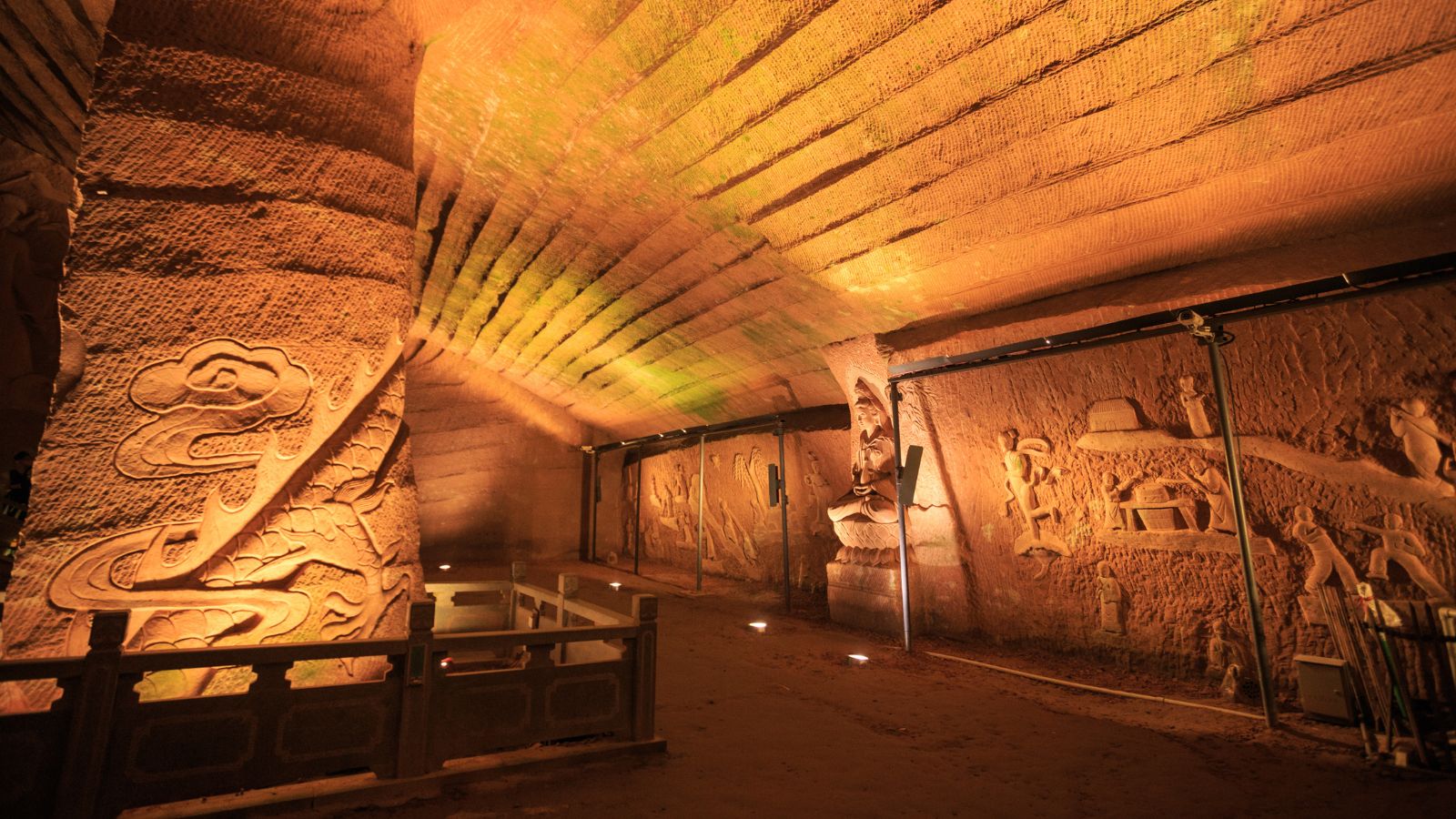Some archaeological discoveries fit neatly into our current understanding of the world. Others remain total enigmas. They puzzle experts and defy easy explanations – unbelievable objects and places that set the mind ablaze with questions. Today, we’re highlighting 14 of the most fascinating such discoveries.
1. The London Hammer (Texas, USA)

In 1936, a hammer with a wooden handle and iron head was found encased in a rock dated to the Cretaceous period (about 140 million years ago). The find raises questions about the possibility of ancient human civilizations predating current understanding. As always, though, questions as to its authenticity exist…
2. The Baghdad Battery (Iraq)

Believed to be about 200 years old, the so-called Baghdad Battery is the name given to a ceramic pot, an iron rod, and a copper tube found together in Khujut Rabu, not far from Baghdad. Nobody knows its exact purpose. But some believe it could have been a form of primitive battery. If you fill it with an electrolytic solution, it produces around 1.1 volts of electricity.
3. The Voynich Manuscript (Mexico)

The Voynich Manuscript is a mysterious illustrated manuscript from the early 15th Century. Its 102 parchment folios are full of images and text. However, it’s written in an unknown language yet to be deciphered.
4. The Longyou Caves (China)

Discovered in 1992, these artificial caves in Zhejiang, China, date back at least 2,000 years. The precision and scale of the caves, along with the mystery of who built them and why, remain unsolved.
5. The Rongorongo Script (Easter Island)

Carved onto wooden tablets on Easter Island, the Rongorongo script has not been deciphered, and its meaning remains unknown. The script is associated with the Rapa Nui people, but its origins and purpose are still uncertain. Debate rages as to its origin, function, and even its legitimacy.
6. Puma Punku (Bolivia)

Part of the Tiwanaku archaeological site in Bolivia, Puma Punku – which translates as “Door of the Puma” features intricately-carved stone blocks with precise cuts and complex geometric shapes. The size of the monoliths and precision of the stonework has raised endless questions. How did this ancient civilization pull off such a feat of engineering?
7. Lake Winnipesaukee Mystery Stone (New Hampshire, USA)

Discovered in 1872 by workmen, this perfectly egg-shaped, four-inch-tall stone features intricate carvings and holes bored into it on either end. The stone’s origin and purpose remain unknown, prompting all sorts of speculation.
8. The Shigir Idol (Russia)

Discovered in a Russian peat bog in 1890, the Shigir Idol has been called a “miracle of preservation.” This 9-foot-tall carved wooden statue dates back almost 11,000 years. That makes it twice as old as Stonehenge. It features intricate carvings and symbols, the meaning of which remains a mystery.
9. The Copper Scroll (Qumran, Israel)

The Dead Sea scrolls are a set of manuscripts found in caves along the shores of the Dead Sea (a lake between Jordan and Israel) in 1947. Among them was the infamous Copper Scroll, which is unique as it’s made of metal instead of papyrus. Here’s the really cool part, though: unlike the other scrolls, this one is an inventory of 64 locations, all bar one of which reveal the location of gold and silver treasures…
10. Yonaguni Monument (Japan)

Located off the coast of Yonaguni in Japan, this underwater “city” consists of giant stone monoliths and similar features hewn and arranged in a way that appears manmade. The site’s origin and purpose remain hotly debated. Some experts suggest it’s a natural formation. What do you think?
11. Göbekli Tepe (Turkey)

Dated to around 9600 BCE, Göbekli Tepe is an ancient temple complex that toppled our contemporary view of modern civilization. Not a UNESCO World Heritage Site, it predates the advent of agriculture and is 6,000 years older than Stonehenge.
12. Nazca Lines (Peru)

Best seen from above, the Nazca Lines are vast geoglyphs etched into the Nazca Desert’s soil. They depict a range of animals and shapes, including a monkey, a whale, and various birds. The origin and purpose of these enormous drawings is unclear. Some experts believe most were created by the Nazca people over 2,000 years ago – a theory that’s contested in other circles.
13. Antikythera Mechanism (Greece)

Discovered in 1901 in a shipwreck off the coast of the Greek island Antikythera, this age-old device is considered the world’s first analogue computer. Believed to have been made by Hellenistic scientists to circa the 2nd century BCE, you could use it to predict astronomical positions and eclipses.
14. The Shroud of Turin

The Shroud of Turin is a sheet of linen that many believe was the burial cloth wrapped around Jesus after his crucifixion. It’s been venerated as a relic for hundreds of years and is currently held in the Cathedral of Saint John the Baptist in Turi, Italy. However, the shroud’s authenticity has long been debated, with modern scientific analysis suggesting it could be from Medieval times.
